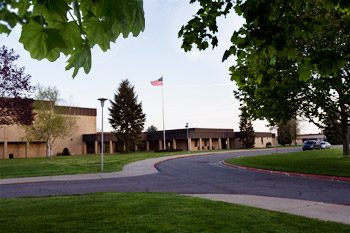Our History
How it all began
 Andrews Academy might not exist at all had it not been for the vision of Ellen G. White, a prominent leader of the Seventh-day Adventist Church during its formative years. The seed bed for what would one day become Andrews Academy began in 1867 when Goodloe Harper Bell started a private school in Battle Creek, Michigan. Among his students were William and Edson White, sons of James and Ellen White.
Andrews Academy might not exist at all had it not been for the vision of Ellen G. White, a prominent leader of the Seventh-day Adventist Church during its formative years. The seed bed for what would one day become Andrews Academy began in 1867 when Goodloe Harper Bell started a private school in Battle Creek, Michigan. Among his students were William and Edson White, sons of James and Ellen White.
Bell’s work with her children must have impressed Ellen White, who saw “Bell in connection with the cause and work of God in Battle Creek.” Bell was known as a strict disciplinarian, but Ellen White viewed an organized program with clear expectations of the student as essential to education. On one occasion she wrote about Bell: "It is true his style is in marked contrast with the generality of teachers. But it is the kind of teaching that is needed, that will give stability to the character."
Because of criticism, Bell left Battle Creek in 1872. Ellen White urged him to return to teach in a school that was to open on June 3, 1872, when 12 students went up to the second story of the print shop where the official church paper, The Advent Review and Herald, had been printed. This time the school was a success, and in December 1874 the school moved to the newly erected Battle Creek College. Sydney Brownsberger, president of the newly-formed college, appointed Bell as chair of the English Department. In 1874, however, the number of high-school students attending the "college" may have exceeded the number of students who were actually prepared for work on the college level.
In 1901, Battle Creek College moved to Berrien Springs, Michigan, and was renamed Emmanuel Missionary College. The secondary school was called Emmanuel Missionary College Academy, a name it retained until 1960. In 1959, the Seventh-day Adventist seminary, known as Potomac University, relocated from Washington, D.C., to the campus of Emmanuel Missionary College. The 700-acre campus of Emmanuel Missionary College now hosted the undergraduate college, the Seventh-day Adventist Theological Seminary, a fledgling school of graduate studies, and a secondary school. In 1960 the board of trustees voted to integrate the disparate education units under the title of Andrews University. The name was not randomly picked out of some administrator’s hat: John Nevins Andrews (1829–1883) was a pioneer theologian, editor, administrator and the first missionary sent by the church to serve outside North America.
The move of the theological seminary, the decision to create a graduate school, and the incorporation of the differing entities under one charter influenced the development of the secondary school, which by this time operated under the title of Andrews University Academy. Since 1874 the academy had only been known as the secondary school serving children of faculty, children who lived in or near Berrien Springs, and whoever else wanted what the school had to offer. In its final phase as an obscure entity serving Andrews University, the academy occupied space in Bell Hall, the structure that housed the School of Education. Soon almost 400 students were squeezed into the space as it expanded and began to offer graduate degrees. The secondary school had to move. For the first time in 104 years, it would have a separate recognizable identity.
Under the direction of Lowell Bock, president of the Lake Union Conference of Seventh-day Adventists, Andrews University, the advisory board of Andrews Academy, and Richard Orrison, who was the principal at the time, construction began on a new secondary school, now called Andrews Academy. The "new" Andrews Academy began operation in September of 1978. School would have begun in August of that year, but workmen had not quite completed the new structure. They had not completed their work by September, but the building was complete enough to occupy. Since September 1978 the secondary school has had an identity that is an integral part of, but yet distinct from that of Andrews University. Over the past two decades, the board, administration and staff of Andrews Academy have been careful to evaluate the changing demographics of Berrien County, examining critically new trends, rejecting what fades and adapting new programs that have proved effective. Most importantly, however, the academy continues to offer academic programs that help students to reflect biblical values and an informed Christian lifestyle.